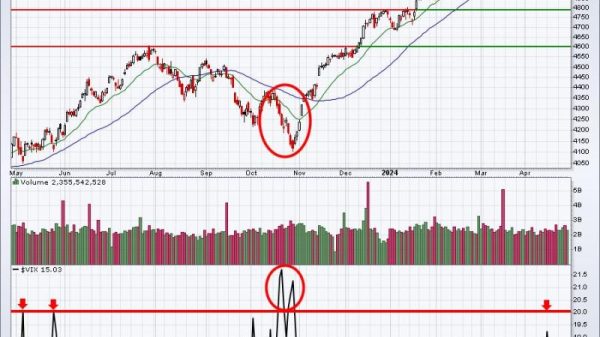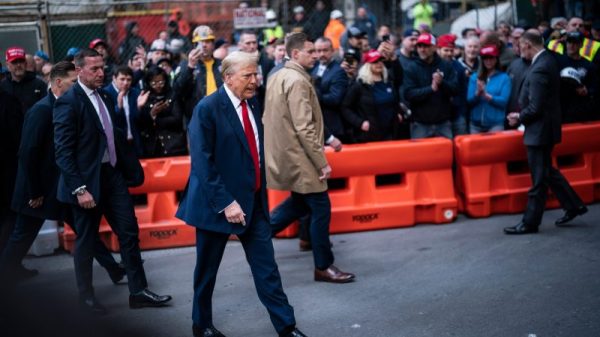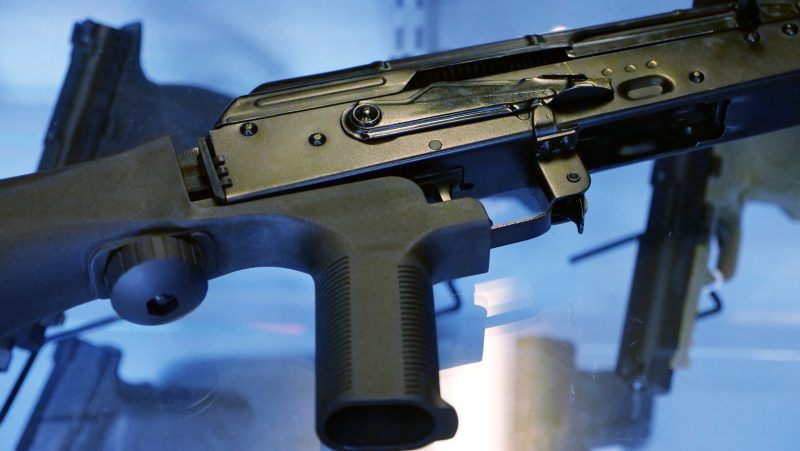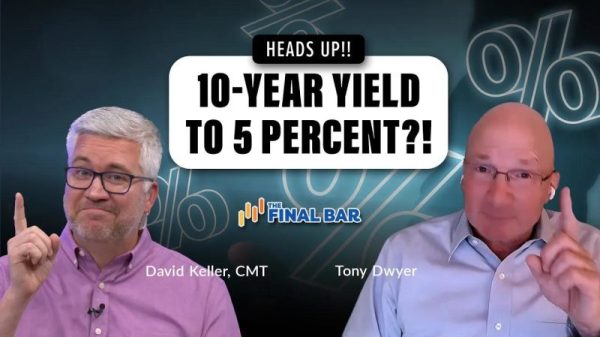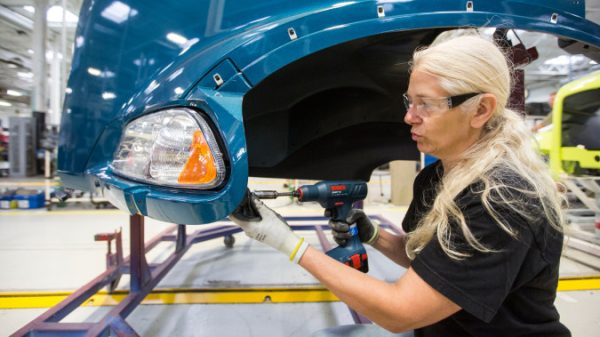A divided Supreme Court seemed to struggle Wednesday with the legality of a federal ban on bump stock devices, which allow semiautomatic rifles to fire hundreds of bullets per minute.
Liberal justices suggested the devices were exactly what Congress had in mind when it long ago imposed restrictions on machine guns. Some conservative justices, however, said the law’s language was not so clear.
The Trump administration moved to ban bump stocks in 2017, after they were used by a gunman to fire on the crowd at an outdoor music festival in Las Vegas, killing dozens and injuring hundreds more in the deadliest mass shooting in modern U.S. history. The effort was reignited in early 2018 after the mass killing at Marjory Stoneman Douglas High School in Parkland, Fla.
The bump stock ban represents one of the few steps by the federal government to address the gun violence that has traumatized the United States, as both Congress and some courts have resisted other firearm restrictions. Although more than a dozen states and D.C. separately restrict the use of bump stocks, a ruling that tosses out the national ban would make the devices legal in many places and could make it more difficult for the federal government to limit access to other firearms and accessories.
Throughout oral argument Wednesday, several liberal and conservative justices expressed concern about dangerous weapons and the bloody damage that can be done by a rifle affixed with a bump stock. But it was not certain based on their questions whether the court, with its 6-3 conservative supermajority, would uphold the ban.
Justice Amy Coney Barrett, a conservative, said that while she is “entirely sympathetic” to the government’s argument, she has concerns that Congress’s law restricting access to machine guns did not clearly cover bump stocks. Justice Neil M. Gorsuch, also a conservative, said he can “certainly understand why these items should be made illegal” but suggested it would be up to lawmakers to do so explicitly.
Liberal Justice Ketanji Brown Jackson, in contrast, said bump stocks are “the kind of weapons that Congress was intending to prohibit because of the damage they cause.” Justice Elena Kagan, also a liberal, said the “torrent of bullets” fired by rifles equipped with the devices is “in the heartland” of what lawmakers were concerned about when they passed the statute.
Michael Cargill, a U.S. Army veteran and the owner of a gun store in Austin, challenged the Trump-era rules after he was forced to surrender two bump stocks. Cargill says the Bureau of Alcohol, Tobacco, Firearms and Explosives overstepped its authority when it reinterpreted long-standing federal limits on machine guns to cover the devices.
The case is one of two before the Supreme Court this term involving gun restrictions — and one of several cases challenging the power of federal agencies, long targeted by conservatives wary of what they consider government overregulation.
Cargill is represented by the New Civil Liberties Alliance, one of the conservative legal organizations that is also behind an effort to upend a 40-year-old court precedent known as Chevron, which often requires judges to defer to the expertise of agency officials when evaluating statutes.
Cargill’s lawsuit to recover his bump stock devices was filed before the Supreme Court’s landmark decision 2022 expanding gun rights by requiring the government to point to historical analogues when defending laws that limit Second Amendment rights. That ruling is at issue in the other gun case before the court this term, which questions the legality of a law barring gun ownership by individuals subject to domestic-violence protective orders.
The question before the court Wednesday, in contrast, did not directly involve the Second Amendment. Instead, the justices examined whether ATF officials properly interpreted a statute that has barred nonmilitary access to machine guns since 1986.
Much of the discussion centered on how a bump stock operates and whether its use amounts to a “single function of the trigger.” The argument was at various times a lesson in grammar, physics and the mechanics of firearms. During one exchange, Kagan and Cargill’s attorney, Jonathan Mitchell, took turns using their hands to demonstrate what it looks like to fire a gun affixed with the device.
Bump stocks are molded pieces of plastic or metal that replace the standard rifle stock that rests against a shooter’s shoulder. The device harnesses a gun’s natural recoil, allowing the rifle to bounce or “bump” rapidly back and forth off a shooter’s trigger finger. Rifles equipped with bump stocks can fire an estimated 400 to 800 bullets per minute, a rate comparable to military machine guns.
The National Firearms Act defines machine guns as firearms that shoot, are designed to shoot or can be readily restored to shoot “automatically more than one shot, without manual reloading, by a single function of the trigger” as well as any part designed and intended solely “for use in converting a weapon into a machinegun.”
The Biden administration, defending the Trump administration’s interpretation, told the court that the devices allow a rifle to fire more than one shot automatically and that a single motion initiates and maintains the firing.
“As long as the shooter maintains that steady forward pressure, the rifle will fire continuously until it runs out of bullets, and it will empty a 100-round magazine like the ones used in the Las Vegas shooting in about 10 seconds,” said Principal Deputy Solicitor General Brian Fletcher. “Those weapons do exactly what Congress meant to prohibit when it enacted the prohibition on machine guns.”
Mitchell, a former Texas solicitor general, vigorously disputed that description, saying the rapid fire is produced through repeated manual activations of the trigger — not a single motion.
A rifle equipped with a bump stock can fire “only one shot per function of the trigger because the trigger must reset after every shot and must function again before another shot can be fired,” he said.
ATF’s assessment of bump stock devices and interpretation of the law has changed over time. In 2003, the agency said an early version was not a machine gun because it did not fire more than one shot with a single function of the trigger. Three years later, the agency changed its position and classified the early model with an internal spring as a machine gun.
Cargill’s attorneys emphasize that for nearly a decade, between 2008 and 2017, the federal government did not count later versions of the devices — without the internal spring — as machine guns. During that time, Americans bought 520,000 bump stocks.
President Donald Trump’s bump stock ban gave owners until March 2019 to destroy or turn over their devices. Gorsuch and Justice Brett M. Kavanaugh expressed concern about the possibility that a half-million people could be prosecuted if they purchased the devices before the rules changed. But Fletcher sought to reassure them that ATF does not have the power to make something a crime that was not a crime before.
The two justices were among several conservatives who questioned the government’s evolving interpretation of the statute, with Kavanaugh noting that bump stocks were not banned during the administrations of Presidents George W. Bush and Barack Obama. Gorsuch questioned the Trump and Biden administrations’ decision to apply to bump stocks a statute first passed in the 1930s, even though other administrations thought differently.
Fletcher said ATF was correcting past mistakes, just as the Supreme Court often does when it decides a statute is being interpreted incorrectly.
“After the Las Vegas shooting, the deadliest shooting in our nation’s history, I think it would have been irresponsible for the ATF not to take another closer look at this prior interpretation,” Fletcher said.
The justices’ questions Wednesday did not always break along the familiar ideological lines. Justice Clarence Thomas noted that the statute was initially passed because of the lethality of machine guns. Behind the latest ban, he said, is the “notion that the bump stock does the exact same thing.”
Justice Samuel A. Alito Jr. asked Mitchell if he could imagine a legislator thinking Congress should ban machine guns but not bump stocks.
In reply, the attorney said bump stocks can help people who have disabilities and people who have arthritis in their fingers shoot their weapons. “There are respectable arguments for why these could remain legal as a matter of policy,” he said.
Justice Sonia Sotomayor quickly followed up, asking, “Why would even a person with arthritis, why would Congress think they needed to shoot 400 to 7 or 800 rounds of ammunition under any circumstance?”
The court’s conservatives are proponents of textualism — a method of interpretation that considers only the words of the law being reviewed, not legislators’ intent or the consequences of the decision. But there were varying opinions expressed by the justices about how to read this particular statute.
“Maybe they should have written something better. One might hope they might write something better in the future. But that’s the language we’re stuck with,” Gorsuch said, taking issue with the government’s reading of the text to include bump stocks.
Kagan said she too considers herself a “good textualist” but came to the opposite conclusion: that the statute must encompass the devices.
“Textualism is not inconsistent with common sense,” Kagan said. “At some point, you have to apply a little bit of common sense to the way you read a statute and understand that what this statute comprehends is a weapon that fires a multitude of shots with a single human action.”
Cargill’s challenge to the bump stock ban was rejected in district court and before a unanimous panel of the conservative U.S. Court of Appeals for the 5th Circuit.
But the 5th Circuit reversed that ruling after a full complement of judges reheard the case. An eight-judge majority concluded the definition of machine gun in the statute does not cover bump stocks in part because “to continue firing after the shooter pulls the trigger, he or she must maintain manual, forward pressure on the barrel and manual, backward pressure [with the trigger finger],” Judge Jennifer Elrod wrote.
Five other judges argued that the definition was ambiguous but said the court was required under a rule of interpretation in cases involving criminal law to resolve the matter in Cargill’s favor.
In dissent, Judge Stephen Higginson, joined by two colleagues, criticized the majority for invoking the rule to “rewrite a vital public safety statute” and to “legalize an instrument of mass murder.”
The Justice Department then asked the Supreme Court to intervene.
The case is Garland v. Cargill.






